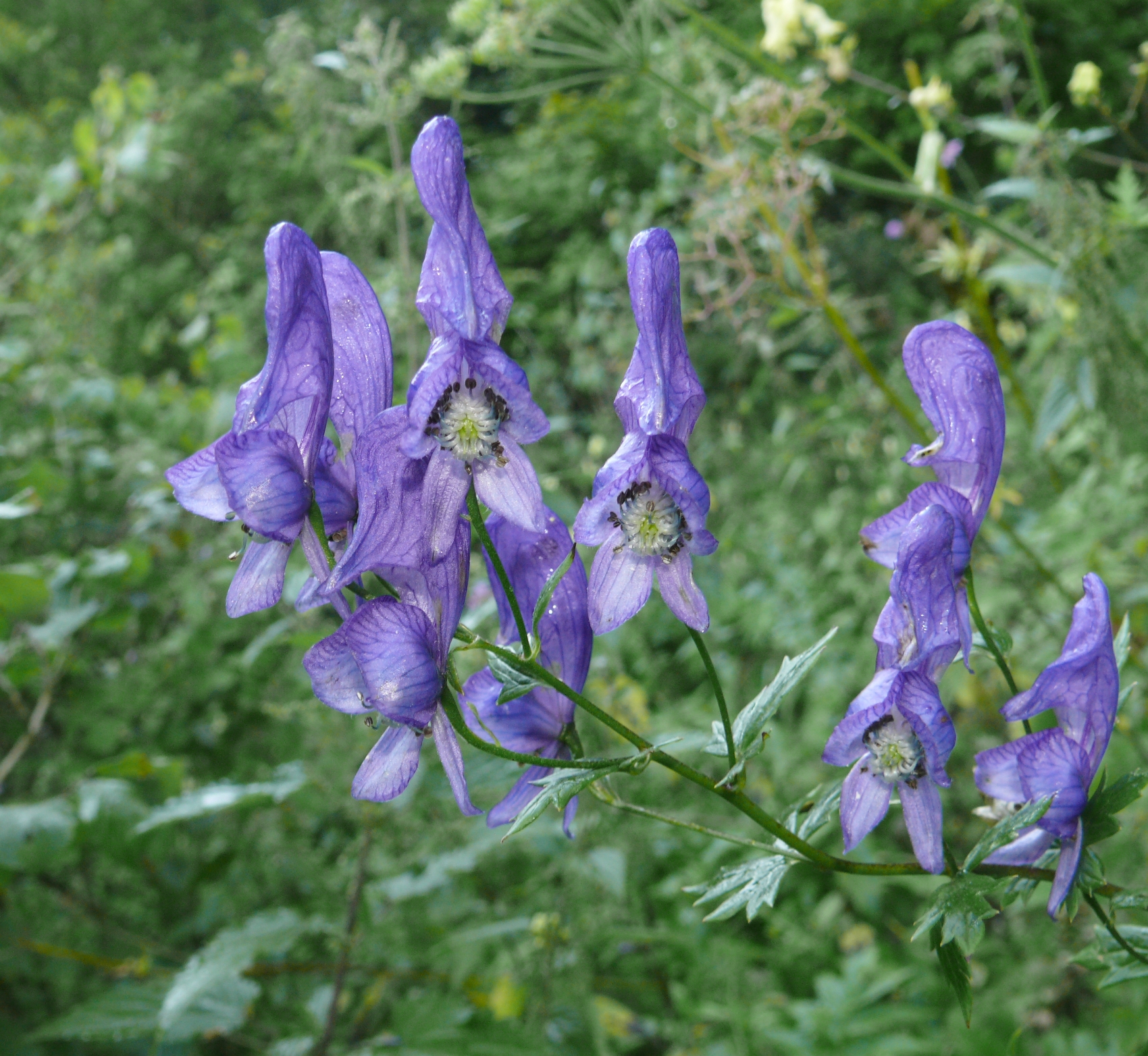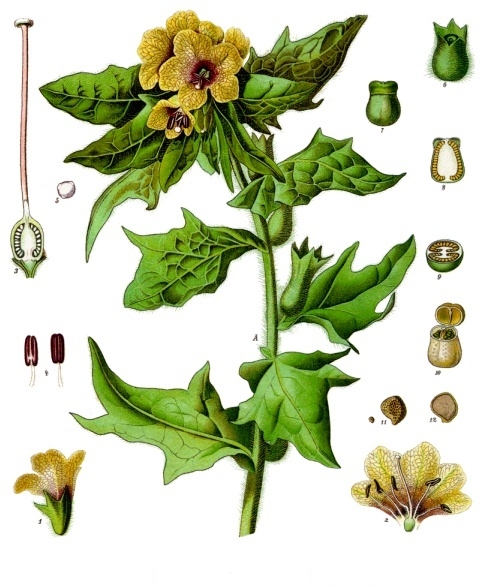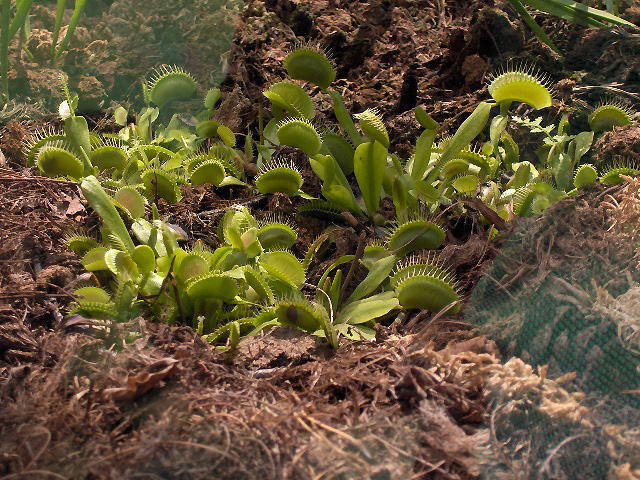There's lots of suggestions on the web about how to modify your garden to a darker taste; as well as some gorgeous pinterest boards, the Everyday Goth has done a fabulous post looking at horticulture for a darker colour palate. I, however, have decided to blog about something which has been close to my heart for a long time; poison gardens.
Since I was a wean I've always been interested in deadly flora; plants that trapped and ate things, plants that were used as poisons, plants where a single berry could stop your heart... I was a twisted child, I suppose. This has only increased since starting medical school - any drug, after all, can be a poison in the right quantity, and many seemingly deadly plants are used for treating a variety of conditions. The cultivation of these plants has been an art for centuries, with much folklore and many books dedicated to them, and they conjure up ideas of intrigue and mystery, of arcane alchemy. And, of course, one of my great role models is a perfect example of this -
 |
| Image from here (original source couldn't be found) |
That's right! As any Addam's Family fan worth their salt knows, Morticia is an avid gardener, growing all variety of poisonous and dangerous plants in her conservatory, including her African Strangler Cleopatra. Morticia's green thumb isn't the only example of lethal botany, however; the Alnwick Gardens feature their very own Poison Garden, which cultivates over 100 varieties of both notorious and everyday plants with dangerous effects. I, obviously, am desperate to visit.
If you're interested in growing your own deadly flora (what's more badass than a garden which can kill, afterall?), I've listed some interesting plants for inclusion! Care needs to be taken, obviously, as to the growing conditions of the plants; as this can often be drastically different between species, separate areas (such as pots) for plants with different requirements to one another is a good idea.
WARNING: Naturally, some of these plants can kill, and although I've endeavored to highlight those of particular risk care needs to be taken with them (particularly around children and animals). Some plants such as giant hogweed are too dangerous to cultivate and others are even illegal, so make sure to read up first if you plan on growing any of these.
Papaver somniferum: the Opium Poppy
 |
| Illustration from here |
The opium poppy, or Papaver somniferum (Papaver 'from Africa', somniferum 'sleep producing') is most famous for its resin, opium. Opium contains, along with other alkaloids, morphine - an incredibly strong analgesic (pain killer), a derivative of which - diamorphine - is famously known as the addictive heroin. The use of opium dates back to prehistoric times, and was reintroduced to the west by China in the 15th century, and sparked the first and second Opium Wars.
As a poison, morphine is often the drug of choice for less reputable medical professionals, where overdose causes asphyxia and death via respiratory depression. There is much folklore dedicated to the poppy, with one of my favourite tales detailing how one throws poppy seeds on the ground to halt a pursuing vampire or daemon, which will be forced to count the seeds. As a garden plant the poppy is very popular, although the cultivation of its seed heads without a license is illegal.
Digitalis spp.: the Foxglove
Yep, the humble foxglove, or Digitalis purperea (Digitalis from the latin for 'finger', purperea 'purple'), is in fact an incredibly poisonous plant! Also known as witches gloves and dead man's bells, the entire plant is considered toxic. Digoxin - the toxic compound present - causes the lowering of heart rate, or bradycardia, which at dangerous levels can cause a heart attack; clinically, however, Digoxin in the treatment of heart failure and arrythmias. As a poison, digoxin is, once again, popular with rogue medical professionals (I'm worried that this post is just becoming a list of all the ways that I can kill people once I qualify... :s); however, the leaves have often been included in salads and herbal teas, both purposefully and accidentally.
Atropa Belladona: Deadly nightshade
 |
| Illustration found here |
Death is caused by the effect of the toxic compound atropine on the heart, with a dangerously raised pulse rate (or tachycardia) resulting; as with digoxin and morphine, this ability has been harnessed by the medical community to treat a low heart rate. Most cases of poisoning, however, are a result of consuming the attractive, sweet berries. I include Deadly Nightshade here mainly because of its infamous reputation - it's not often cultivated, and due to its high toxicity I wouldn't recommend it. If you do decide to cultivate it, buy young plants (seeds are particularly difficult to germinate), use gloves and keep it away from all pets, herbs and edible flora.
Aconitum napellus: Monkshood
 |
| Photo from here |
Hyoscyamus niger: Black Henbane
 |
| Illustration taken from here |
Mandragora officinarum: the Mandrake
| Photo from here |
There are, of course, other poisonous plants out there for cultivation, such as poison hemlock (famous for being the plant that killed Socrates), hound's tongue and common wormwood (also known as absinthe wormwood for its role in the production of the green spirit), though some aren't recommended for gardening. There are other things that can be included, however!
While they don't strictly speaking fit in a poison garden, carnivorous plants are just as deadly, and their unusual appearance will contrast well with some of the more attractive or innocuous species listed above.
 |
| Venus Fly Traps (photo from here) |
Pitcher Plants
 |
| Photo from here |
Utricularia spp.: Bladderwort
| Photo from here |
Augment these with more fantastical creations, such as those seen at 102 Wicked Things To Do (my new favourite blog). I, personally, am desperate to make myself a scorpion orchid.
Now that I have (hopefully) encouraged you to start up your own poison garden, I'm off to collapse into bed. Happy growing!
Fee
Resources
http://www.littleshopofhorrors.co.uk/ (good range of carnivorous plants for sale)
http://www.thepoisongarden.co.uk/
http://hermionesgarden.blogspot.co.uk/








I've always loved plants but am horrible at keeping them alive. Hopefully you are better with plants than I am :P
ReplyDeleteAlso I have tagged you in a challenge on my blog.
I'm certainly getting better at it, though I can't say that I'm good at remembering to water them. :P
DeleteMany thanks! I'll get around to doing it shortly.
what an awesome idea
ReplyDeleteThank you!
DeleteI have the beginning of a poison garden and I would recommend Abrus, https://en.wikipedia.org/wiki/Abrus_precatorius.Delicate fern like vine,easy to grow from seed although there are inhibitors in the seed that prevent too many seeds from sprouting in a single space. Highly toxic, more so than Ricin, which is also present in my garden with the gorgeous Purple Camphor I have everywhere. From your page here I was inspired to purchase some Black Henbane seed that I am eager to receive. Since I am in the Sonoran Desert I am able to grow anything that can tolerate heat and I have had Carrion flowers, Stapelia gigantea, for many years. I was looking for a poison gardeners club of a sort to no avail.
ReplyDeleteI'm from jalisco and I have a lot of baneful herbs, mandrake, black, white and egypcian henbanes, deadly nightshade, wolfabane, larkspur, foxglove, abrus, castor bean, water and poison hemlock, delphinium, calas, caladium, white snake root, bryonia alba, bloodroot, lilys of the valley, and a lot more and is a creepy and dark garden. I'm trying to do something similar tothe famous ainwick garden
ReplyDelete